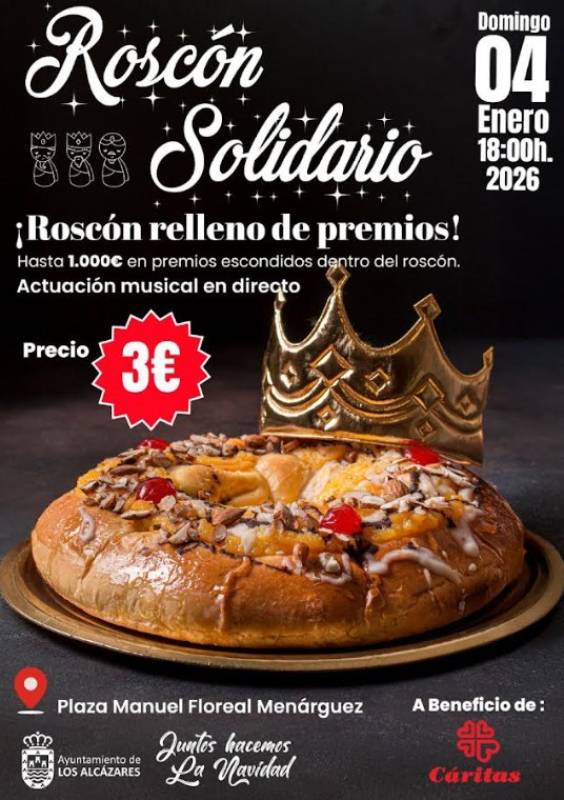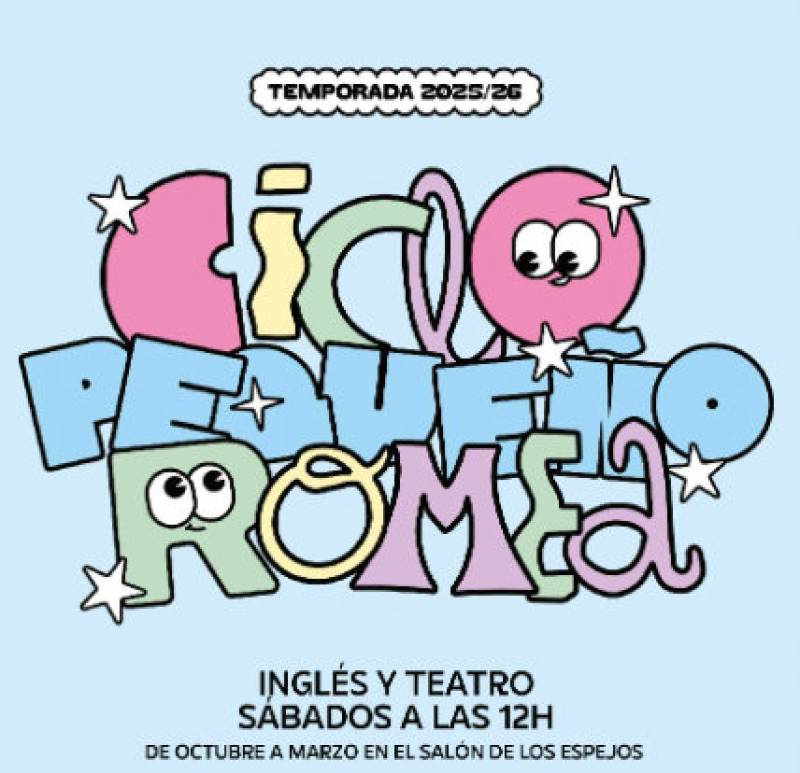
To be listed on the haciendadelalamo TODAY MAP please call +34 968 018 268.
Meaty Melva is an ideal fish for Mediterranean cazuelas and guisos
Pepita’s Cazuela de Melva Empanada is a local recipe from Isla Plana
Melva is just one of the environmentally sustainable fish species which can be used for this family recipe.
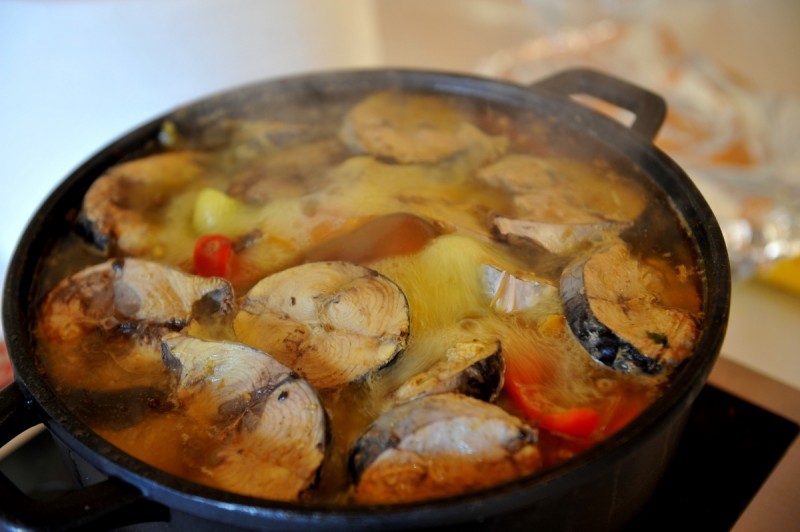
Much has been written about the necessity to buy sustainable fish and protect the fish stocks of species threatened by over-exploitation and here on the Spanish Mediterranean coast fish is an essential and inseparable part of the Mediterranean dining experience and way of life.
Every coast-dwelling family enjoys its own local recipes and the basic concept of a fish stew or casserole using locally caught fish is an essential weapon in the armoury of every housewife, the fish changing seasonally depending on the season as shoals of fish move along the Mediterranean coast and into the nets of waiting fishermen.
An intensely flavoured and meaty fish adds powerful flavour to a basic cazuela, thick slices of fish simmered gently atop a bed of fresh Mediterranean vegetables amidst a gutsy caldo stock, flavoured with saffron and spices from the African coast.

Between February and June the fishermen of La Azohía, on the Cartagena coast, install their Almadraba fishing nets, a system first used by the Phoenicians 3,000 years ago, then exploited by the Romans who built factories to process fish caught off this coastline and make pungent garum fish sauces which they exported to feed discerning Romans throughout their mighty Empire ( a good example of which can be seen in nearby Puerto de Mazarrón where there is a well-preserved Roman salt fish factory), a system continued by the Moors who occupied the region until the 13th century and then maintained by local fishermen, Almadraba nets still a part of the scenery along this coastline during the late winter and early spring months.
This system of netting is listed as being “pesca artesanal”, as it is a low impact, environmentally friendly method of fishing, which targets selected species of fish and respects the environment. Fishing is small-scale, with small boats travelling shorter distances to fish, capable of catching only limited quantities of targeted species, and maintaining the marine environment by not over-exploiting stocks, and using methods which damage the marine environment, in this case a network of nets directing the fish to swim through a maze of channels into a confined netted area from which they can be easily extracted.
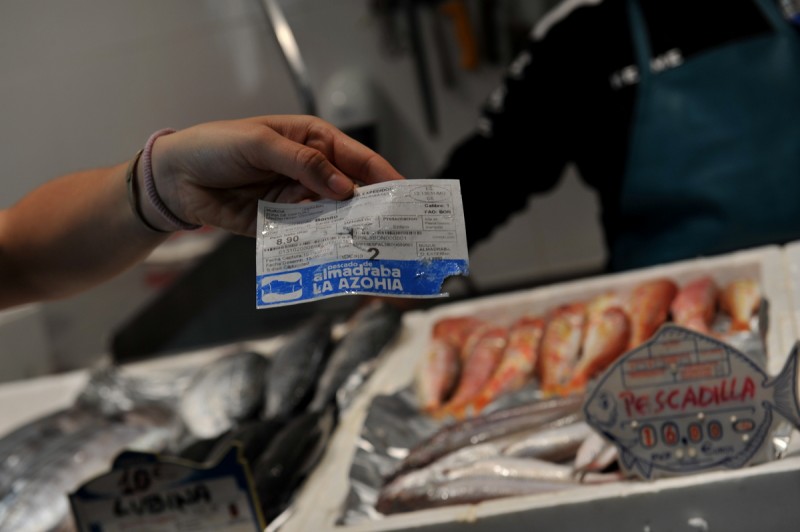
Fish caught by this method are clearly labelled as Pescado Almadraba (see blue label) and are not expensive, the Melva purchased for this recipe was sold at six euros a kilo in May 2018 in the Isla Plana fishmonger (behind the Freiduría fish restaurant and alongside the neighbour's association) and had been caught just a couple of kilometres away in la Azohía; ask your fishmonger if he is stocking Almadraba fish if you want to guarantee environmentally friendly fish.
Until the end of June the Melva (Frigate tuna) is migrating from the Straits of Gibraltar along the Spanish coast and passes along the Murcian coastline, so appears in fish shops around this time, a perfect fish for a Mediterranean casserole.
The Melva (Auxis spp.)is a robust, rapidly growing, meaty fish, a voracious predator which can achieve sharp bursts of speed (hence its lack of scales) and grows up to a maximum of 50cm, with the capability to live for around five years.
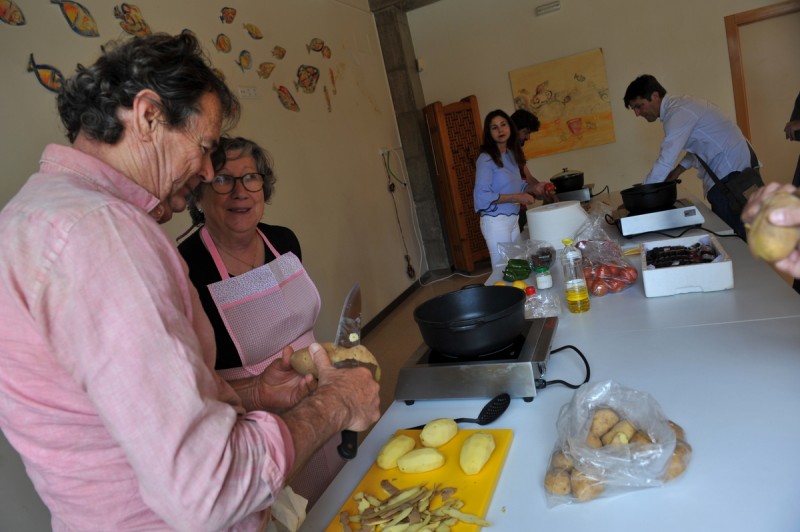
They generally travel in large shoals and migrate annually from the Atlantic to different areas of the Mediterranean during the summer months in order to reproduce.
A meaty fish, it also has high levels of Omega 3 fatty acids, which can help to lower blood fat levels, assist with rheumatoid arthritis and are even believed to heighten the effects of antidepressants.
It’s a powerful, compact and very meaty fish, with the distinctive V-shaped tail which denotes this type of blue-finned fish and is ideal for a casserole-style dish, gutted, with the head removed and cut into thick slices.

Other fish which are also suitable for this dish and are sustainable include the Bacoreta, Lecha or Bonito, all of which appear on fish counters at different times of the year, are sustainable species with a powerful flavour and don´t disintegrate when cooked in a cazuela or guiso.
It was explained by an expert in sustainable fishery that the best-known of these bluefin varieties is tuna, threatened by over-fishing, but that this is akin to eating “the lion at the top of the food chain”, as this enormous fish requires several years to mature and reaches a weight of several hundred kilos, consuming many smaller fish as they grow, so choosing smaller varieties which are more numerous, and therefore, sustainable, is a more environmentally decision, and the flavour of the fish outweighs the convenience of buying a large steak of boneless fish.

Pepita’s Cazuela Empanada
This recipe is open to considerable adaptation, and was given by Pepita, from Isla Plana, who was happy to share her family recipe, which she, in turn, learned from her own mother.
To start:
One deep casserole dish or saucepan, the size adapted to fit the number of diners.
Appropriate fish, one chunky melva, weighing around 1 kilo and about 30cm in length will comfortably feed four.
Ingredients for a 1 kilo fish:
2-3 good-sized potatoes
2 ripe red peppers
2 ripe medium sized tomatoes
1 large onion
2-3 bay leaves
Scattering of fresh parsley
1/2 lemon, sliced
1 Teaspoon of cumin seeds
1 sachet of yellow food colouring
1 Tablespoon of pine nuts
3 fat garlic cloves
Sprinkling of saffron strands
Salt to taste
A good slug of olive oil
Method:
Slice the onions, cut potatoes into thick slices, de-seed and slice peppers, slice the tomatoes and chop the garlic.
Layer into a casserole dish, with olive oil and onions at the bottom, followed by potatoes, tomatoes and peppers.
Add the bay leaves, cumin, garlic, pine nuts, colourant, saffron, lemon and parsley, then add water to just below the top of the contents and bring to the boil.
With the lid on, simmer for about half an hour until the vegetables are soft, then add the sliced fish and simmer gently for about 15 further minutes with the lid off and the top of the pan covered with a loose covering of foil, allowing the liquid to reduce, but NOT steaming the fish or drying it out.
Serve with bread, a sprinkling of parsley and a nice dry white wine.
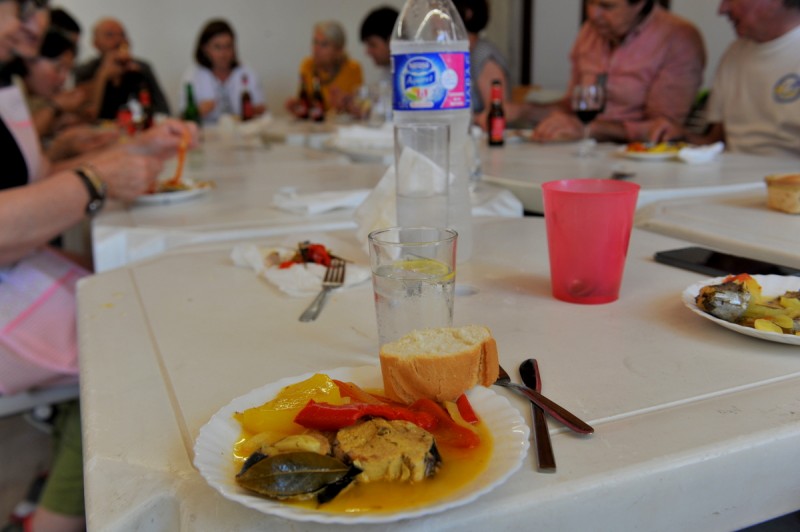
Images taken during free workshop run by the Columbares Association as part of the Pescados con Arte programme. Fish from the Pescadería-Freiduría de Isla Plana (in front of the neighbour's association)











